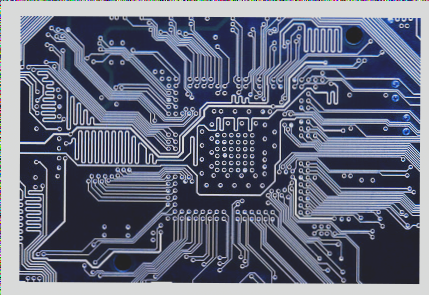Causes and Solutions for PCB Film Deformation:
- Causes:
- Failure in controlling temperature and humidity levels.
- Excessive temperature in the exposure machine.
- Solutions:
- Maintain temperature at 22±2°C and relative humidity at 55%±5% RH.
- Use a cold light source or an aerator with a cooling system, and regularly replace the backup film.
Process for Correcting PCB Film Distortion:
- Master the operation of the digital programming instrument.
- Install the negative film and compare it with a drilled test board. Adjust hole positions based on deformation values using the digital programming instrument to ensure graphic design integrity and accuracy.

3. For graphics with simple lines, large line widths, or irregular deformations, consider the “splicing method” by cutting and re-splicing the film.
4. Enlarge holes on the PCB using the “pad overlap method” to meet technical requirements.
5. Scale and create a new plate using the “mapping method.”
6. Use the “photographic method” to adjust graphic size.
Notes on Relevant Methods:
- Splicing Method:
- Applicable: Negative films with low line density and uneven deformation.
- Not Applicable: Films with high wire density or small line widths and spacing.
- Note: Minimize damage to wires and pads during splicing.
- Hole Position Modification Method:
- Applicable: Uniformly deformed films.
- Not Applicable: Films with severe local distortions.
- Note: Correct out-of-tolerance hole positions after adjustment.
- Hanging Method:
- Applicable: Films not deformed and that should remain undistorted after copying.
- Not Applicable: Pre-deformed films.
- Note: Hang the film in a suitable environment to avoid contamination.
- PCB Pad Overlap Method:
- Applicable: Graphic lines not densely packed with line width and spacing above 0.30mm.
- Not Applicable: Situations with strict aesthetic requirements.
- Note: Expect elliptical pads and halo effects after overlapping.
- PCB Photography Method:
- Applicable: Consistent deformation in both length and width directions.
- Not Applicable: Inconsistent deformation in length and width directions.
Important Reminder:
- It is crucial to maintain precise focus while capturing images to avoid any distortion in the lines.
- Negative film is susceptible to more significant loss, often requiring multiple adjustments to achieve the desired circuit pattern.
If you require PCB manufacturing services, feel free to reach out to me.


